“You want to WHAT?” – My Cat, Probably
If you’ve ever told someone you’re planning to walk your cat, you’ve likely been met with laughter, raised eyebrows, or the inevitable “Good luck with that!” And if you’ve ever actually tried to leash train a cat, you’ve probably witnessed something resembling a dramatic Shakespearean tragedy—flopping, wailing, and maybe even a slow-motion escape attempt.
But can you really walk a cat? The answer is yes—with patience, the right approach, and an understanding that, unlike dogs, cats don’t walk for exercise; they walk for exploration.
So, if you’re ready to venture into the world of leash training a feline, buckle up. It’s going to be a wild (and hopefully leash-controlled) ride.
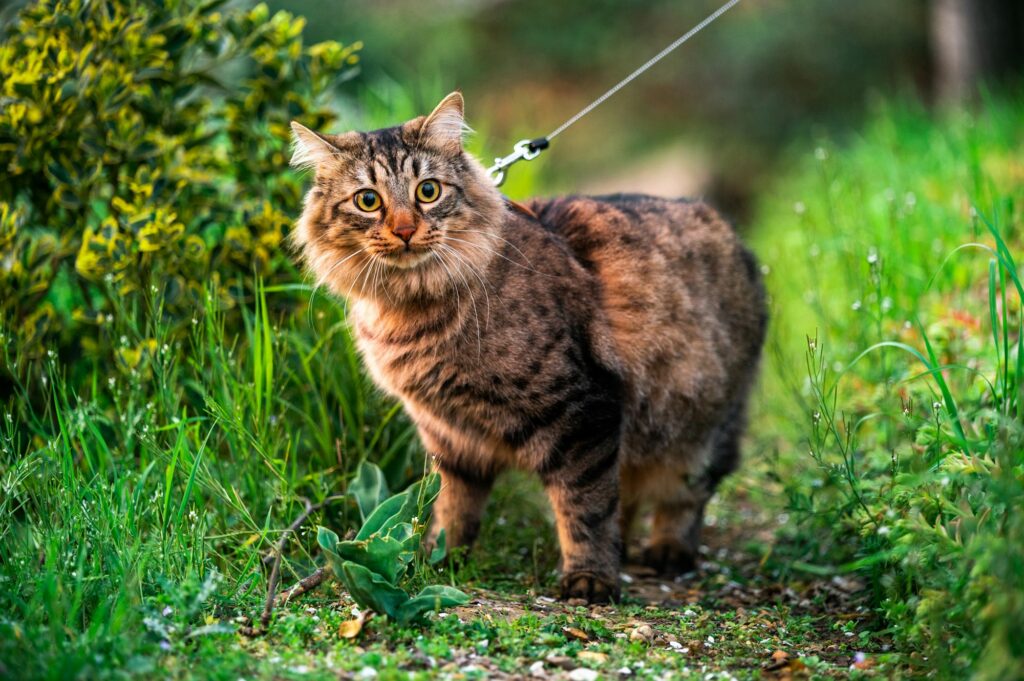
1. Is Walking a Cat Even a Good Idea?
Before you go all-in on buying the cutest harness on the market, ask yourself:
Does Your Cat Even Want to Go Outside?
Not all cats are adventure seekers. Some are perfectly content napping in sunbeams and judging your life choices from afar.
🚀 Ideal candidates for leash training:
✔ Confident, curious cats who love sitting by the window or watching birds
✔ Cats that eagerly bolt for the door every time you open it
✔ Kittens and young cats—who are often more adaptable to new experiences
😾 Not-so-ideal candidates:
❌ Super skittish cats who panic at the sound of the vacuum cleaner
❌ Cats who hate change and consider “outside” a synonym for “doom”
❌ Older cats who have never been outdoors and are content staying inside
🚨 Reality Check: If your cat panics just hearing a lawnmower, leash training might not be worth the stress for them.

2. The Gear You Need: Because Safety First
If you’re going to walk a cat, do it right. No one wants to be that person running down the street after an escaped feline.
The Essentials:
✔ A Cat-Specific Harness: Not a collar! Cats can easily slip out of collars, and leashes attached to collars can hurt their necks. Look for an adjustable harness that fits snugly.
✔ A Lightweight Leash: Not too long (or you’ll be playing tug-of-war with a tree). 4-6 feet is perfect for control while allowing exploration.
✔ ID Tags & Microchip: Even indoor cats should be microchipped before going outside—just in case they decide to Houdini their way to freedom.
✔ Treats: Because bribery works.
🚨 Pro Tip: If your cat goes full ninja escape artist mode, consider a leash with a bungee-style elastic to prevent sudden jerks.

3. Step-by-Step: How to Leash Train Your Cat Without Losing Your Sanity
Step 1: Get Your Cat Used to the Harness (Indoors First!)
Put the harness near their favorite sleeping spot and let them sniff it. Reward with treats.
After a few days, gently put it on them—WITHOUT fastening it. Let them wear it for a minute. Treats. Praise. Maybe some dramatic glares in return.
Next, fasten the harness but don’t attach the leash yet. Let them walk around the house in it. Some cats will act totally normal. Others will flop over as if gravity just doubled—this is normal.
🚨 Reality Check: If your cat acts like you’ve just strapped a 50-pound weight to their back, don’t panic. Most adjust within a few sessions.
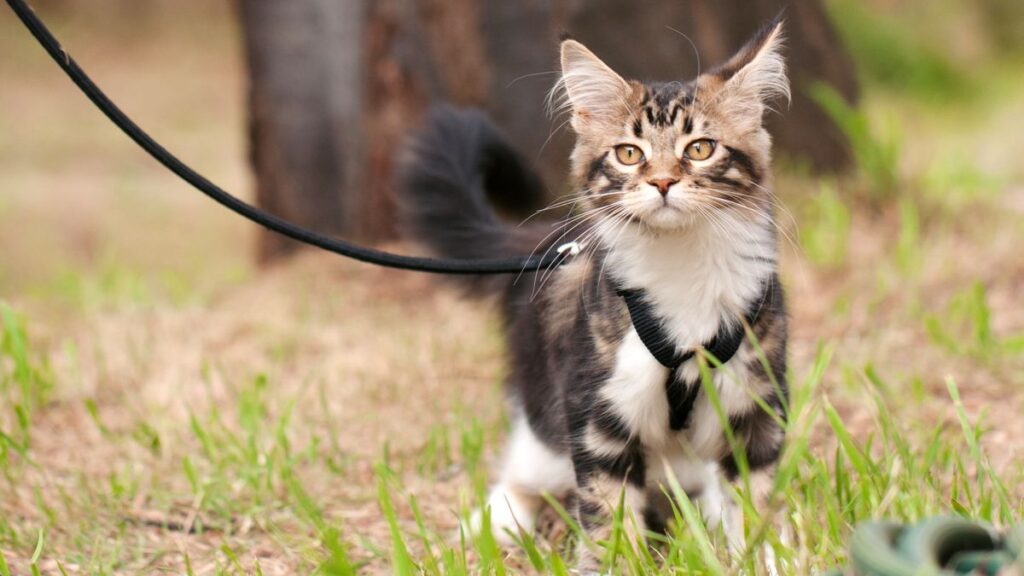
Step 2: Introduce the Leash (Still Indoors!)
Once your cat accepts the harness, attach the leash and let them drag it around.
After they seem okay with that, pick up the leash but don’t pull. Follow your cat around the house, letting them lead. (Yes, they’re in charge here—get used to it.)
🎯 Goal: Make the leash feel normal, not restrictive.
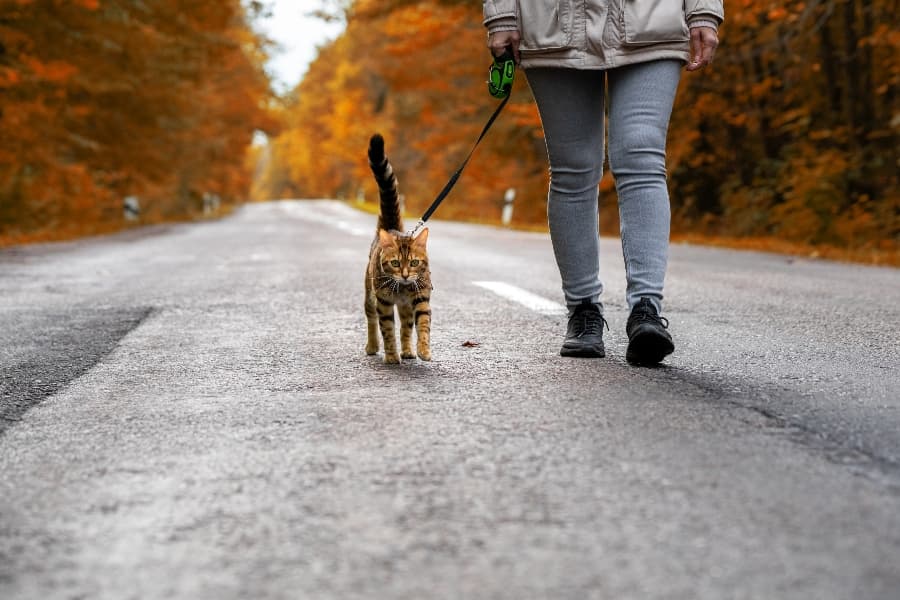
Step 3: The Big Moment—Going Outside!
🌿 Start in a Safe, Quiet Area:
- A fenced backyard or a calm, enclosed space is best.
- No cars, loud noises, or other animals.
🐾 Let Your Cat Decide the Pace:
- DO NOT drag them. If they don’t want to move, sit with them until they’re ready.
- Some cats will only sit and sniff on their first outings—and that’s okay!
👀 Watch for Signs of Stress:
- Flattened ears, tail tucked, wide eyes = Too much, too soon!
- If they panic, pick them up and go inside. Never force it.
🚨 Pro Tip: If your cat loves being outside but hates the leash, consider a catio (a secure outdoor enclosure).
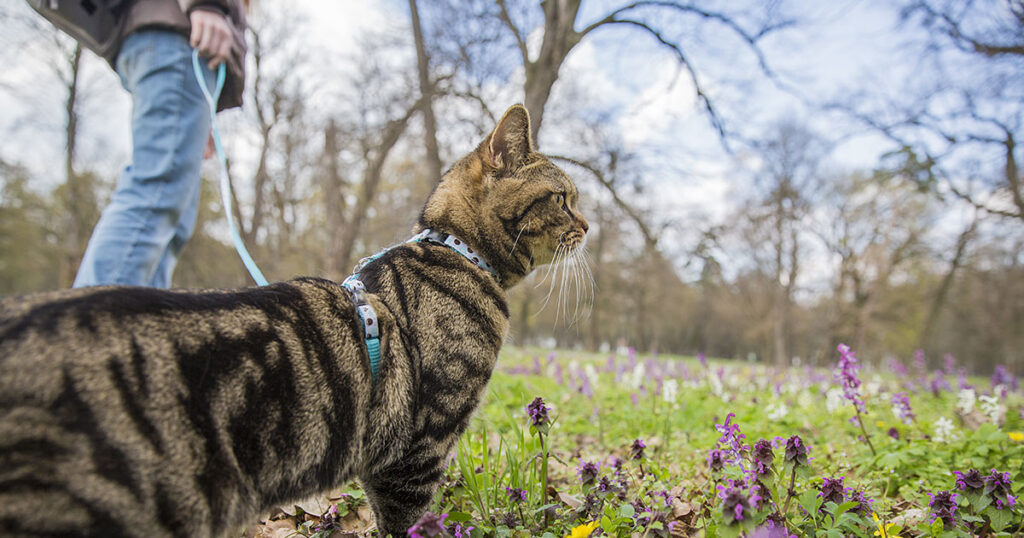
4. Troubleshooting: Why Is My Cat Being Dramatic?
If your cat’s first few leash-walking attempts aren’t a roaring success, don’t give up. Some cats take time, and others enjoy the drama of resisting new things.
🛑 Problem: My cat won’t move!
💡 Solution: Bring high-value treats (like shredded chicken) and place them a few feet ahead. No force—just incentive.
🛑 Problem: My cat just flops down and refuses to get up.
💡 Solution: This is normal cat protest behavior. They’re testing you. Ignore it and wait.
🛑 Problem: My cat bolts at every sound.
💡 Solution: Move to a quieter area and slowly build confidence indoors before trying again.
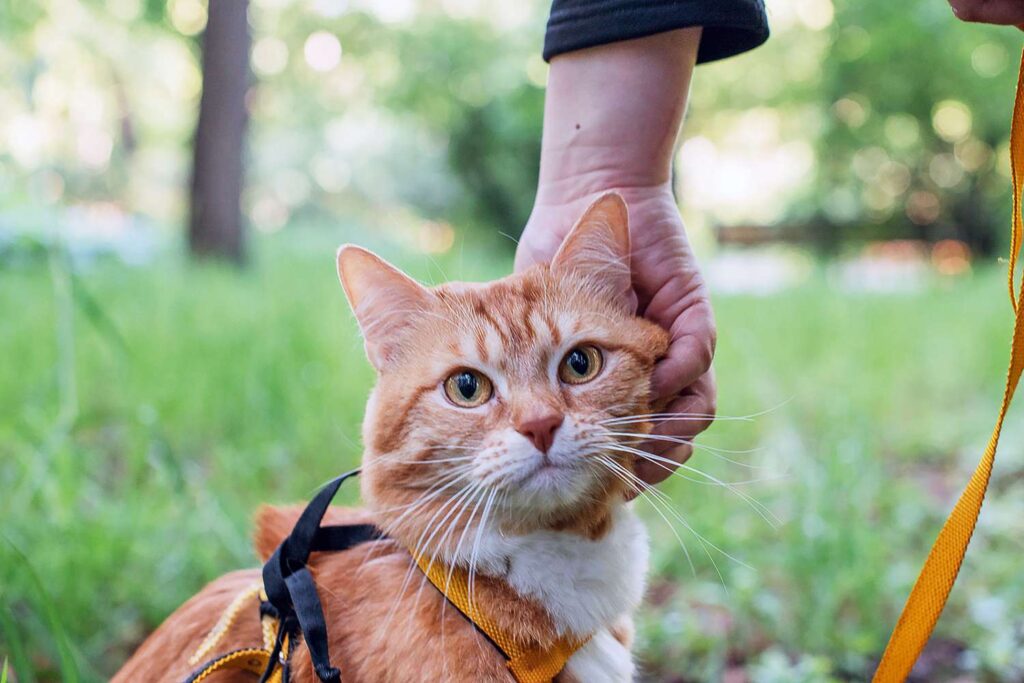
5. When Walking Isn’t the Best Option
Look, some cats just aren’t meant to be walked—and that’s totally fine! If your cat hates the leash, there are plenty of safe alternatives for outdoor enrichment:
✔ A Window Perch: Let them watch “Cat TV” from the safety of your home.
✔ Catios (Outdoor Enclosures): The best of both worlds—safe outdoor access without a leash.
✔ Interactive Indoor Play: Feather wands, puzzle feeders, and climbing trees keep them engaged.
🚨 Remember: A stressed-out cat isn’t having fun. If they’re not enjoying it, don’t force it.
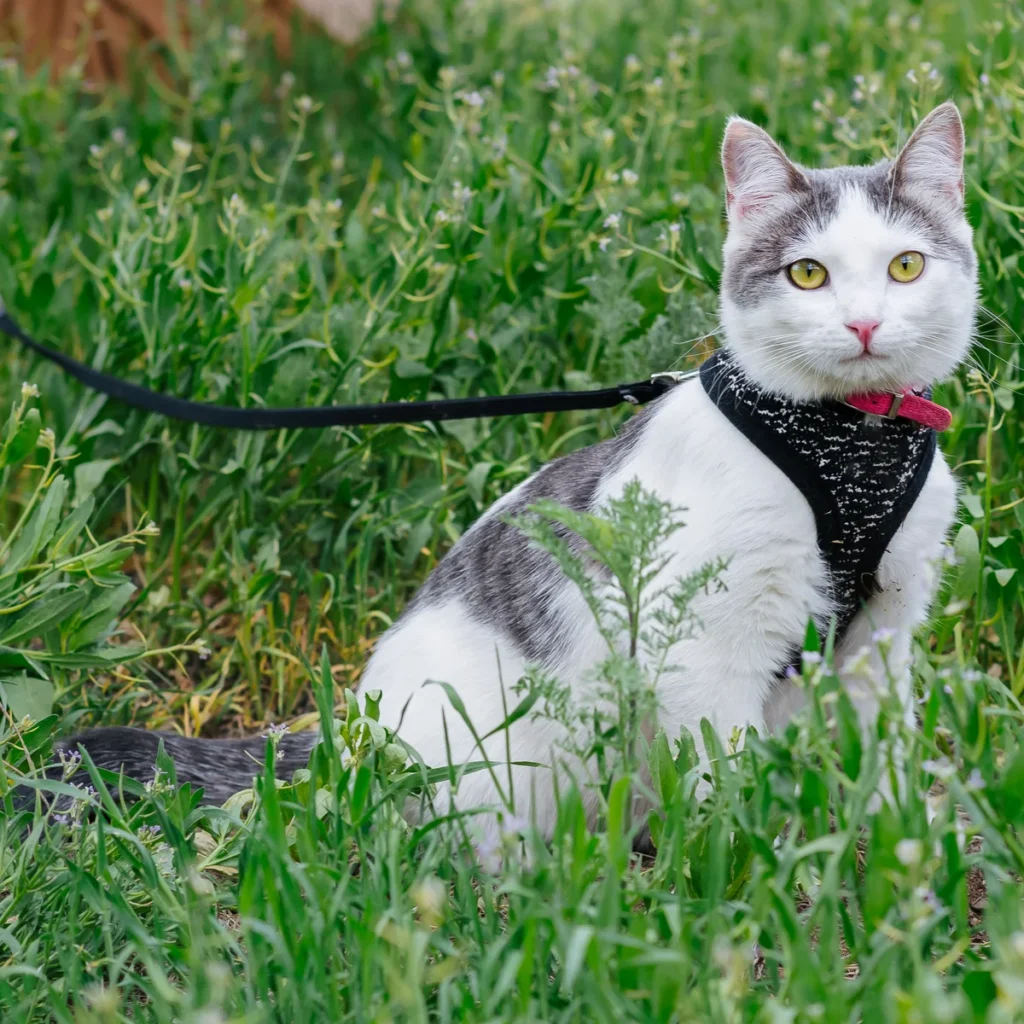
Final Thoughts: Should You Walk Your Cat?
Walking a cat isn’t about exercise like it is for dogs—it’s about letting them explore safely. Some cats thrive on leash walks, while others prefer to rule their kingdom from the couch.
✔ If your cat loves adventure, give leash training a shot!
✔ If they hate it, respect that and find other ways to enrich their life.🐾 Have you ever tried leash-walking your cat? How did it go? Tell me your funniest (or most disastrous) leash training stories in the comments—I need to know I’m not the only one who’s been judged by my own cat. 😹

